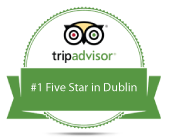The Dryest January
On the one hundredth anniversary of Prohibition, we tell the extraordinary story of what happened when the United States banned alcohol. And it all began in January.
As many mark the new year with a Dry January detox, one hundred years ago this month, the United States of America went a little further. In January 1920, Prohibition was introduced. The ban on the production, importation, transportation and sale of alcohol across America was to last for thirteen years. Some States went further, and also banned possession of alcohol.

But the 1920s was also the dawn of The Jazz Age, when speakeasies flourished, flappers danced, and writers such as F. Scott Fitzgerald defined an era with classics including The Great Gatsby, in which flamboyant characters were seemingly soaked in champagne.
So was the experiment a success or a failure? Public health improved, but on the other hand, Prohibition gave rise to bootleggers, moonshiners and the whole underground network that created the space for organised crime to flourish.
There were quirks in the system that led to some unintended results too. Alcohol was allowed on prescription, and one doctor was reported to have written 475 boozy prescriptions in just one day. Legendary British Prime Minister, Winston Churchill, who had described Prohibition as “an affront to the whole history of mankind”, was prescribed unlimited alcohol during his trip to the States in 1932, “especially at meal times. The quantity is naturally indefinite…” read his doctor’s note.
Prohibition also lead to an emancipation of women. Whereas once saloon bars were mainly male affairs, the Speakeasy culture changed all that. Naturally private, these were spaces where cultural norms were already being flouted with the sale of booze – so why not go a little further?
Women were welcomed, and many women went on to run some of the country’s most famous (or infamous) speakeasies. By the same token, these secret hostelries were also more integrated, as black and white people mingled, in a way that they never could before. The popularity of Jazz took off, with black musicians taking centre stage.
Irish whiskey suffered. Moonshine makers often called their hideous creations “Irish whiskey”, and while Irish distillers refused to supply the illegal trade, the Scots cleaned up. The result? Irish whiskey was equated with bad liquor, while Scotch was seen as premium. Cocktails changed too. Sidecars, Brandy Alexanders, and the Mary Pickford were all dreamed up to mask the taste of not-great spirits. Many prohibition era cocktails have gone on to become classics today.
So how best to mark the centenary of an experiment that changed everything – in many unanticipated ways? If you’re planning your own Dry January, or even embracing Prohibition as a longer term way of life, the good news is that times have changed, and non alcoholic cocktails have come a long way. Discover new twists at The Cellar Bar with a warming Irish Maltini (Irish malt tea, demerara sugar syrup with a float of fresh cream, and lightly sprinkled with nutmeg), or get refreshed with a Basil and Peach Smash, made from peach oolong tea, fresh basil leaves, and fresh lemon juice and honey.

Getting into the spirit of the other side of Prohibition? Raise a classic cocktail (made with the very best spirits, naturally) at The Cellar Bar, or experience a Whiskey Flight at Bar No 23, to see just how wronged Irish whiskey once was. Cheers!



